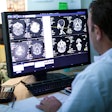
The majority of U.S. radiologists are male and in private practice, according to a new article in the February edition of the Journal of the American College of Radiology. Women continue to shun medical imaging even as the number of men versus women in medical programs has achieved 50-50 parity.
On the positive side, radiology may become more diverse in the coming years as the current crop of radiologists retire, according the authors.
"Because the current cadre of radiologists graduated from medical school when women were less well-represented, it is possible that the number of female radiologists will increase as male colleagues retire," wrote lead author Dr. Edward Bluth, from the Ochsner Clinic Foundation in New Orleans, and colleagues.
The findings are part of the 2014 Human Resources Commission Workforce Survey, conducted by the American College of Radiology (ACR). The researchers used ACR's Practice of Radiology Environment Database (PRED) to distribute an electronic survey to 1,936 group leaders in January 2014 (JACR, February 2015, Vol. 12:2, pp. 155-157).
For the first time, the survey included questions related to the gender makeup of the radiology workforce and leadership, as well as the full- and part-time status of the radiologists. The survey did not address the issue of financial parity by gender.
"This survey represents the first attempt by the ACR to report using the PRED on the number of women in its membership and their representation in practice type, part-time work, location in the U.S., and leadership roles," Bluth and colleagues wrote.
Among the group leaders invited to participate, 426 responded, for a response rate of 22%. These 426 group leaders represent a total of 10,845 radiologists, or 35% of all practicing U.S. radiologists.
No news?
Bluth's group found that 78% of the workforce of radiologists is male. Of radiologists practicing full time, 82% are men and 18% are women.
"Over several years, the percentage of women in radiology has remained at approximately 20%," co-author Dr. Julia Fielding, from the University of North Carolina School of Medicine, told AuntMinnie.com. "The absolute whys are not clear, but several studies have shown that late exposure to the field, an understanding of basic physics, and fear of competition are all issues."
The bulk of both male and female radiologists are in private practice, but more women are in academic practice than men, Bluth and colleagues found.
| Site of radiologist employment by gender | ||||
| Private practice | Academic/university environment | Academic clinic | Hospital | |
| Men | 58% | 18% | 7% | 14% |
| Women | 43% | 31% | 9% | 16% |
"More women work in academic practices, though the role of gender in this difference may be secondary to the benefits of a flexible schedule that allows for child care and other family responsibilities, or to a desire to contribute to the academic mission," the authors wrote.
The survey also found that 91% of male radiologists work full time, compared with 73% of female radiologists. Meanwhile, 9% of male radiologists work part time, while 27% of female radiologists do.
Finally, Bluth and colleagues found that 15% of leadership roles (group chair, president, vice chair, or board members) are filled by women, while 85% are filled by men. However, when the total number of practicing radiologists was considered, the leadership gap was smaller: 10% of the women are in leadership roles, compared with 17% of the men.
"After starting a career, women tend to fall off the leadership track due to child care issues in a two-parent family," Fielding told AuntMinnie.com. "Once one falls off the track, it is very difficult to get back on. Many women never achieve the level of senior partner or professor, and their wages are about 25% to 30% less than their male colleagues."
The current survey's findings are similar to those of a 2003 ACR survey conducted by Lewis et al (Radiology, March 2007, Vol. 242:3, pp. 802-810), which indicated that women's status hasn't changed much in the past decade, Bluth and colleagues wrote.
In any case, more research will be done, they noted.
"The [ACR's] Commission on Human Resources and the Commission for Women and General Diversity will continue to explore the complexities of the education pipeline, hiring practices, and salary issues," they wrote. "It is hoped that by understanding this information, the specialty of radiology can be made more attractive to all who are deciding on a medical specialization."
It's all about the pipeline
Fundamentally, gender diversity in radiology is a pipeline issue, said Dr. Ella Kazerooni, a professor of cardiothoracic radiology at the University of Michigan. Kazerooni serves on the Commission for Women and General Diversity.
"For at least a decade now, the number of male and female students in medical school has been about 50-50," Kazerooni told AuntMinnie.com. "We've made great strides in encouraging women to enter the field of medicine, and that's an important first step. But somewhere between medical school and residency, the number of women entering radiology falls off."
Female medical students should know that radiology is an excellent discipline for women -- and if patient contact is important, that it does offer opportunities, Kazerooni said.
"We have to address the myths about radiology, one being that there's lots of radiation exposure that could negatively affect family building," she said. "And if women tend to want more direct patient contact, radiology does offer that, through interventional or fluoroscopy or mammography practice. It's not just sitting in a dark room reading images."
And the issue of whether radiologists work part time or full time has broadened beyond women as new generations of doctors enter the workforce, Kazerooni said.
"In our practice, we have a number of people working part time, both men and women," she said. "It's not a female-specific issue anymore, but rather a generational one. Younger doctors have higher expectations of work-life balance."
One thing that makes a career in radiology exciting is that the field is crucial to the healthcare enterprise, according to Kazerooni.
"Patient care decisions aren't made until a diagnostic test is performed," she said. "Imaging has an incredibly powerful role."




















